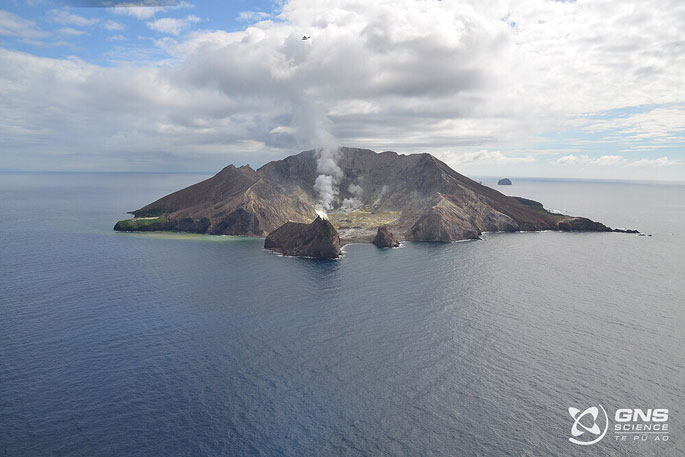Recent severe weather has wiped out the last reliable sensors on Whakaari/White Island as the active crater continues to produce steam and gas plumes.
Recent images from a Whakatāne webcam show Whakaari emitting steam and gas, but do not detect any significant changes in overall volcanic activity.
This comes as recent severe weather took out an on-island site, meaning GNS Science volcanologists can no longer receive data from the North Rim webcam and the Crater Floor GNSS (GPS) sensor.
'These were our last remaining reliable sensors on the island,” Geonet says in its volcanic activity bulletin on Tuesday.
The Volcanic Alert Level remains at 2 – which is for moderate to heightened unrest.
The bulletin says this is mostly associated with volcanic unrest hazards, like discharge of steam and hot volcanic gases, earthquakes, landslides, and hydrothermal activity.
But there is still potential for eruption hazards, and eruptions can still occur with little or no warning.
 An active vent area on Whakaari producing moderate steam and gas emission on January 16, 2023. Photo: GNS Scienece/Waikato Times.
An active vent area on Whakaari producing moderate steam and gas emission on January 16, 2023. Photo: GNS Scienece/Waikato Times.
The Aviation Colour Code remains at Yellow, which acknowledges the current level of activity, but also considers 'the greater level of uncertainty in our interpretation due to the current lack of consistent, useful real-time data”.
As the weather allows, regular gas measurements and observation flights will continue until the on-island equipment and power supplies can be serviced.
'The most recent flights last month showed the steam and gas plume continues to originate from the same vent locations as previously observed, with discharge rates in a similar range.
'There has been no evidence of ash emission or eruptive activity from these vents.”
Satellite-based ground deformation data is obtained about every 10 days that allows scientists to look for any trends in the ground deforming.
This is alongside daily satellite-based sulphur dioxide (SO2) emission measurements, although the bulletin said this technique was not as sensitive as gas measurements during flights.
'Neither of these satellite techniques have detected significant changes in the overall activity at the volcano over the past few months.”



1 comment
We need to ...
Posted on 24-05-2023 13:36 | By morepork
... "keep an eye" on this volcano because of its proximity to habitation. It obviously doesn't like us doing that but we need to, nevertheless... :-) I hope the GNS monitors get replaced quickly.
Leave a Comment
You must be logged in to make a comment.